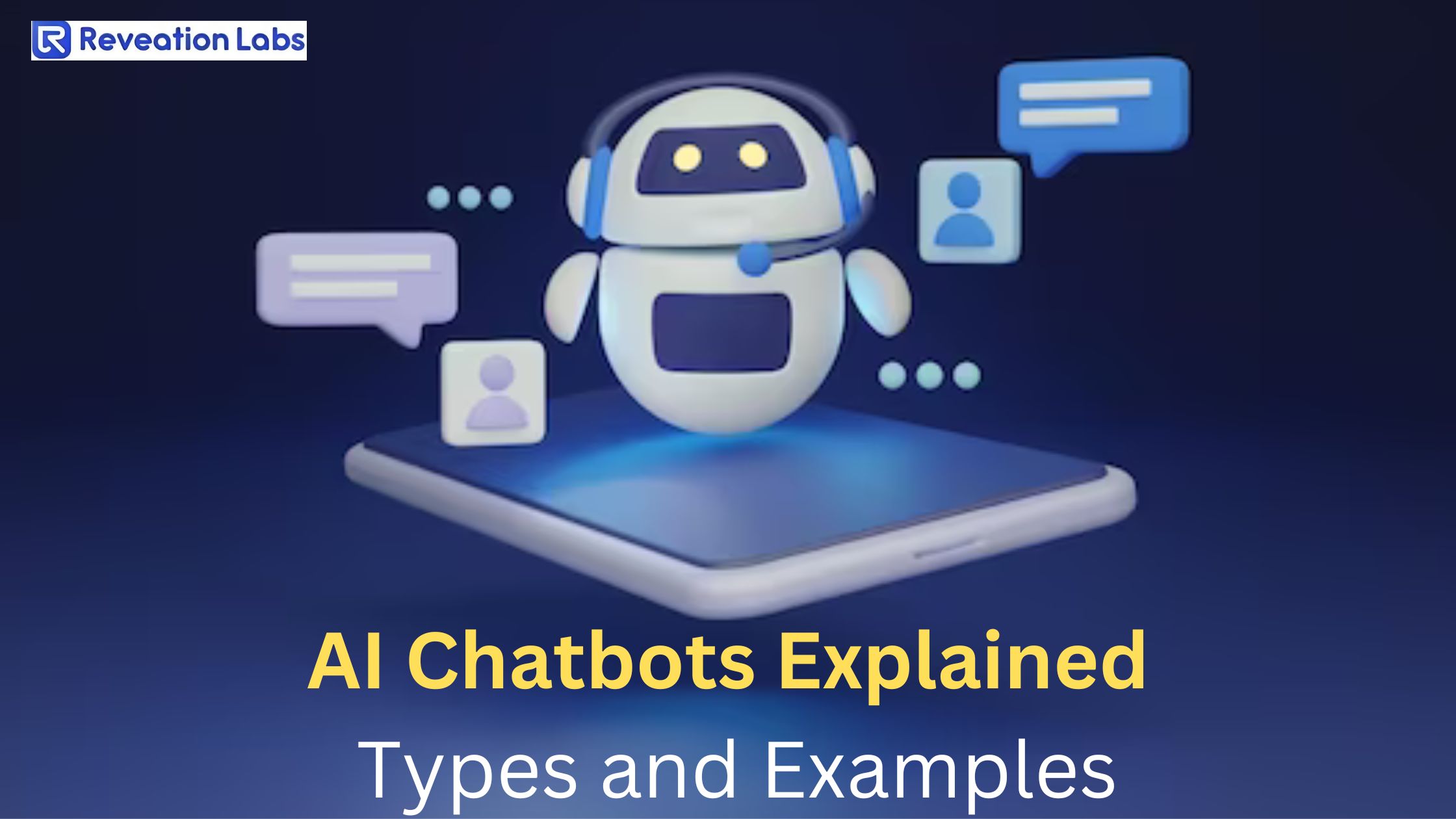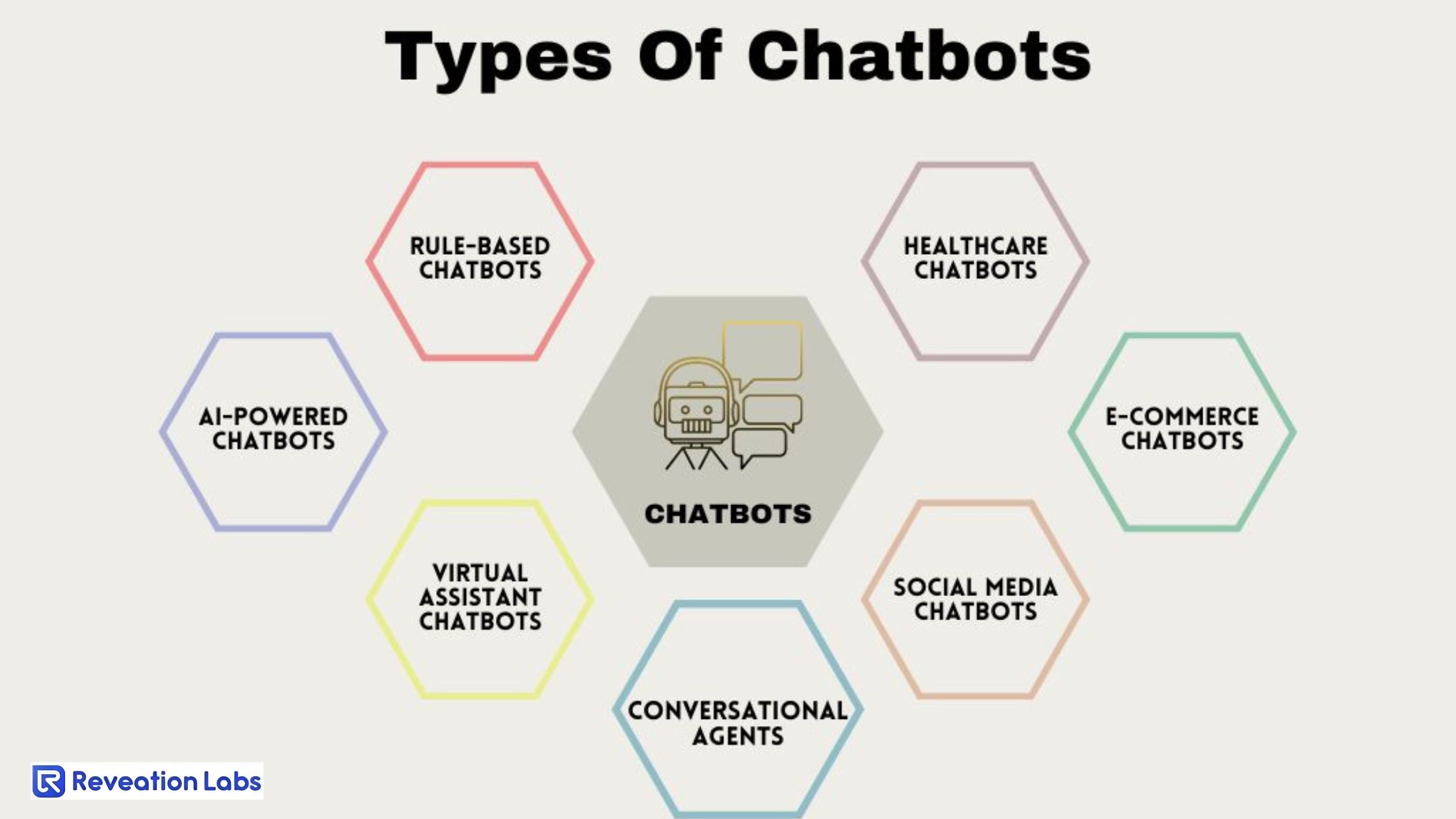komal Rathi
Fri Dec 08 2023


Over 80% of businesses report that they have integrated chatbots into their operations.
Why are these conversational agents gaining such rapid popularity?
What makes them indispensable in today's tech-driven landscape?
let's uncover the importance of chatbots and explore how they have evolved into the digital companions we interact with daily.
Definition of Chatbots
Chatbots are computer programs made to chat with people, especially over the internet. These artificial intelligence (AI) systems are programmed to understand and respond to user queries or commands, providing a conversational interface for interacting with digital systems.
Evolution and Rise of Chatbots
The evolution of chatbots can be traced back to the early days of computing when simple programs were created to engage in basic conversations. However, the significant advancements in natural language processing (NLP) and machine learning (ML) technologies rised more sophisticated and intelligent chatbots.
The emergence of chatbots gained momentum with the increasing popularity of messaging platforms and the need for businesses to enhance customer engagement. As technology evolved, so did chatbots, transforming them from rule-based systems to AI-powered agents capable of understanding context, learning from interactions, and providing more personalized responses.
Importance of Chatbots in Various Industries
1. Customer Service: Chatbots have become integral in the customer service landscape, offering instant and efficient support. They can handle routine inquiries, provide information, and troubleshoot problems, freeing up human agents to focus on more complex issues.
2. E-commerce: In the retail sector, chatbots facilitate seamless shopping experiences. They assist customers in finding products, provide recommendations, and process transactions, enhancing user satisfaction and driving sales.
3. Healthcare: Chatbots are utilized in the healthcare industry to offer medical information, schedule appointments, and provide assistance in emergencies. They contribute to improved patient engagement and streamline administrative tasks.
4. Finance: Banking and financial institutions uses chatbots for tasks like account inquiries, fund transfers, and financial advice. These bots enhance user experience, reduce response times, and increase operational efficiency.
5. Education: Chatbots are employed in educational settings to assist students with information, answer queries, and provide learning resources. They contribute to personalized learning experiences and support educators in managing administrative tasks.
6. Human Resources: In HR departments, chatbots assist with employee onboarding, answer HR-related queries, and provide information about company policies. This improves communication and helps streamline HR processes.
7. Marketing: Chatbots play a role in marketing by engaging with users, collecting data, and offering personalized product recommendations. They contribute to targeted marketing strategies and customer retention efforts.
Different Types Of Chatbots

1. Rule-based chatbots
Rule-based chatbots, also known as decision-tree or script-based chatbots, operate on a set of predefined rules. These chatbots follow a specific set of instructions or decision trees to respond to user inputs. The rules are typically created and programmed by developers, outlining the bot's behavior based on different input scenarios.
A. Characteristics of Rule-Based Chatbots:
1. Predefined Rules: Rule-based chatbots rely on explicit rules that dictate their responses. These rules are written and programmed by developers to cover various scenarios.
2. Limited Flexibility: These chatbots have limited adaptability and may struggle to handle inputs outside the predefined rules. They lack the ability to learn from new data or experiences.
3. Structured Conversations: Interactions with users are often more structured and linear compared to other types of chatbots. The conversation flow is determined by the programmed rules.
4. Simple Implementation: Rule-based chatbots are relatively simple to implement, making them suitable for specific use cases where a more sophisticated approach might not be necessary.
B. How Rule-Based Chatbots Work:
1. Input Analysis: The chatbot analyzes the user's input to understand the intent and context. This is often done through pattern matching or keyword recognition.
2. Rule Matching: The bot compares the user's input against a set of predefined rules. These rules are designed to cover various scenarios and determine the appropriate response.
3. Response Generation: Based on the matched rule, the chatbot generates a predefined response. The response is selected from a set of programmed replies associated with the specific rule.
4. Output to User: The generated response is then presented to the user as the chatbot's reply. This process continues iteratively as the user provides additional input.
C. Use Cases of Rule-based chatbots
FAQ and Customer Support: Rule-based chatbots are commonly used for handling frequently asked questions and providing customer support. They can quickly provide information based on predefined rules and troubleshoot common issues.
Appointment Scheduling: These chatbots can be employed to schedule appointments or bookings by following a set of rules related to available time slots and user preferences.
Information Retrieval: Rule-based chatbots can retrieve specific information from a database or knowledge base and present it to the user in a conversational manner.
Suggested: The Role of ChatGPT for Customer Service: A Detailed Guide
AI-Powered Chatbots
AI-powered chatbots are computer programs designed to simulate conversation with human users, especially over the internet. These chatbots utilize artificial intelligence (AI) technologies to understand and respond to user queries or commands. They are often employed in customer service, support, and other applications to provide instant responses and enhance user experience.
A. Machine Learning and Natural Language Processing:
1. Machine Learning (ML): AI-powered chatbots often use machine learning algorithms to improve their performance over time. ML enables chatbots to learn from interactions, understand patterns, and adapt their responses based on the data they receive.
2. Natural Language Processing (NLP): Natural Language Processing NLP is a crucial component of AI-powered chatbots. It allows the chatbots to comprehend and interpret human language, making them capable of understanding user input, extracting meaning, and generating contextually relevant responses.
B. Examples of AI-Powered Chatbots:
1. Customer Support: Many businesses use chatbots for customer support on their websites. These chatbots can answer frequently asked questions, troubleshoot issues, and provide information to users.
2. E-commerce: AI-powered chatbots are employed in e-commerce platforms to assist users in finding products, placing orders, and tracking shipments.
3. Social Media: Some social media platforms integrate chatbots for automated interactions, handling queries, and engaging with users in real-time.
4. Healthcare: Chatbots are used in the healthcare sector to provide information about symptoms, schedule appointments, and offer basic medical advice.
Virtual Assistant Chatbots
A virtual assistant is a software program or application that uses AI to provide assistance to users. Virtual assistants can perform various tasks, such as answering questions, scheduling appointments, sending reminders, and interacting with other applications on behalf of the user.
A. Integration with Smart Devices:
1. Smart Home Devices: Virtual assistants often integrate with smart home devices, allowing users to control their lights, thermostats, security systems, and other connected devices through voice commands.
2. Mobile Devices: Virtual assistants are commonly integrated into smartphones and tablets, providing users with hands-free control and voice-activated assistance.
3. Wearable Technology: Some virtual assistants are compatible with wearable devices, enabling users to access information and perform tasks directly from their smartwatches or other wearables.
B. Notable Virtual Assistant Technologies:
1. Amazon Alexa: Developed by Amazon, Alexa is a virtual assistant that powers devices like Echo speakers. It can perform tasks, answer questions, and control smart home devices through voice commands.
2. Google Assistant: Integrated into Google's ecosystem, Google Assistant is a virtual assistant that works across various devices, including smartphones, smart speakers, and smart displays.
3. Apple Siri: Siri is Apple's virtual assistant, available on iPhones, iPads, Macs, and other Apple devices. It can perform tasks, answer questions, and interact with other Apple applications.
4. Microsoft Cortana: Cortana, developed by Microsoft, serves as a virtual assistant integrated into Windows devices, offering voice-activated assistance and task management.
Conversational Agents
Conversational agents, also known as chatbots or virtual agents, are AI-driven programs designed to engage in natural language conversations with users. They can be text-based or voice-enabled and are used to facilitate communication and interaction between users and machines. Conversational agents aim to understand user input, interpret context, and generate appropriate responses.
A. Human-Like Interactions:
1. Natural Language Understanding (NLU): Conversational agents employ advanced Natural Language Understanding (NLU) techniques to comprehend and interpret user input, allowing for more natural and contextually relevant interactions.
2. Context Awareness: These agents strive to maintain context throughout a conversation, remembering past interactions and using that information to provide more coherent and personalized responses.
3. Emotional Intelligence: Some conversational agents are designed to exhibit a degree of emotional intelligence, recognizing and responding to user emotions in a more human-like manner.
B. Applications in Customer Service and Engagement:
1. Customer Support: Conversational agents are frequently used in customer service applications to provide instant responses to common queries, troubleshoot issues, and guide users through problem-solving processes.
2. Engagement on Websites: Many websites employ conversational agents to engage visitors, assist them in finding information, and enhance overall user experience.
3. Appointment Scheduling: Conversational agents can be integrated into systems for scheduling appointments, making reservations, and coordinating meetings, saving time and effort for users.
Social Media Chatbots
Chatbots play a significant role in social media platforms, enhancing user engagement and providing automated assistance. They can be integrated into messaging apps and social media channels to interact with users in real-time.
A. Enhancing Customer Interaction:
1. Instant Responses: Social media chatbots enable businesses to provide instant responses to customer inquiries, improving responsiveness and satisfaction.
2. Order Processing: Some businesses use social media chatbots to facilitate order processing, allowing users to make purchases directly within the messaging platform.
3. Feedback and Surveys: Chatbots can be programmed to collect user feedback and conduct surveys, helping businesses gather valuable insights for improvement.
B. Examples of Successful Social Media Chatbots:
1. Facebook Messenger Chatbots: Many businesses use chatbots on Facebook Messenger to provide customer support, deliver news updates, and even facilitate transactions.
2. Twitter Chatbots: Some companies utilize chatbots on Twitter to engage with customers, answer queries, and participate in promotional activities.
3. WhatsApp Business Chatbots: WhatsApp is a popular platform for business communication, and Whatsapp chatbots are employed to automate responses, handle orders, and provide information.
E-Commerce Chatbots
E-Commerce chatbots are transforming the landscape of online shopping by providing personalized and interactive experiences for users. These chatbots are integrated into eCommerce websites and platforms to assist customers throughout their shopping journey.
A. Personalization and Recommendations:
Personalized Shopping Experience: eCommerce chatbots leverage user data and preferences to offer personalized product recommendations, creating a tailored shopping experience.
Assistance in Decision-Making: Chatbots assist users in making purchase decisions by answering product-related queries, providing reviews, and offering comparisons between products.
Order Tracking and Customer Support: eCommerce chatbots enhance post-purchase experiences by providing order tracking information and addressing customer inquiries in real-time.
B. Benefits for Businesses and Customers:
Increased Efficiency: Chatbots automate routine tasks such as order tracking, reducing the workload on customer support teams and allowing them to focus on more complex issues.
24/7 Availability: eCommerce chatbots provide round-the-clock assistance, ensuring that customers can get information and support at any time, leading to improved customer satisfaction.
Data Collection and Analytics: Businesses can gather valuable insights into customer behavior and preferences through the interactions with eCommerce chatbots, enabling data-driven decision-making.
Suggested: Top Generative AI Trends in 2024
Healthcare Chatbots
A. Improving Patient Engagement:
Healthcare chatbots are designed to enhance patient engagement and provide valuable support in various aspects of healthcare.
B. Appointment Scheduling and Health Monitoring:
Appointment Scheduling: Healthcare chatbots streamline the appointment scheduling process, allowing patients to book appointments, receive reminders, and access relevant information easily.
Health Monitoring: Some healthcare chatbots assist in monitoring patients' health by collecting and analyzing data, offering personalized health advice, and reminding users to take medications.
C. Ethical Considerations and Challenges:
Privacy Concerns: The use of healthcare chatbots raises concerns about the privacy and security of sensitive medical information. Ensuring robust security measures is crucial to maintaining patient trust.
Accuracy and Reliability: Healthcare chatbots must provide accurate information and advice. Ensuring the reliability of medical recommendations is a challenge that requires continuous improvement and validation.
Ethical Decision-Making: Healthcare chatbots may face challenges in making ethical decisions, especially in situations where human judgment and empathy are essential. Balance between automation and human involvement is important.
Regulatory Compliance: Healthcare chatbots need to comply with healthcare regulations and standards to ensure that they meet legal requirements and maintain the highest standards of patient care.
Future Trends in Chatbots
Integration with Augmented Reality (AR) and Virtual Reality (VR):
Enhanced User Experiences: Chatbots are expected to integrate with Augmented Reality (AR) and Virtual Reality (VR) technologies to provide more immersive and interactive user experiences. This integration can be particularly beneficial in fields like retail, education, and training.
Virtual Shopping Assistants: AR-powered chatbots may assist users in virtual shopping experiences, allowing them to visualize products in their real-world environment before making a purchase.
Advancements in Natural Language Understanding:
Contextual Understanding: Future chatbots are likely to exhibit improved contextual understanding, allowing them to engage in more natural and nuanced conversations with users.
Multilingual Capabilities: Advancements in natural language processing may enable chatbots to seamlessly switch between multiple languages, catering to a more diverse user base.
Impact of Quantum Computing on Chatbot Capabilities:
Increased Processing Speed: Quantum computing on chatbots has the potential to significantly enhance the processing speed, allowing them to handle more complex tasks and deliver faster responses.
Improved Machine Learning Models: Quantum computing may contribute to the development of more sophisticated machine learning models, leading to more intelligent and adaptive chatbots.
Conclusion
In conclusion, chatbots have evolved into versatile tools with applications across various industries. From AI-powered chatbots facilitating customer interactions to virtual assistants enhancing personal productivity, these conversational agents play a crucial role in modern technology.
The future of chatbots holds exciting possibilities, including integration with emerging technologies like AR and VR, advancements in natural language understanding, and the potential impact of quantum computing on their capabilities.
Why Reveation Labs
We are a team that is technically proficient and simultaneously caring for your business. Our ideology is to provide the latest technologies that suit your business well.
Let’s discuss your requirements!
Give your business the next-gen technology it deserves. Be a part of our family of successful enterprises that work on high-end software solutions.
Experts
In all the latest technologies and developments.
Creative
To innovate the best solutions and pick the right technology for you.
Ethical
To always put you first & respect your business values and procedures.
Dedicated
To meet the deadlines and help you until the very end and beyond.
Approachable
For all your business needs and queries at any point of time.
Transparent
In our ways of working.





